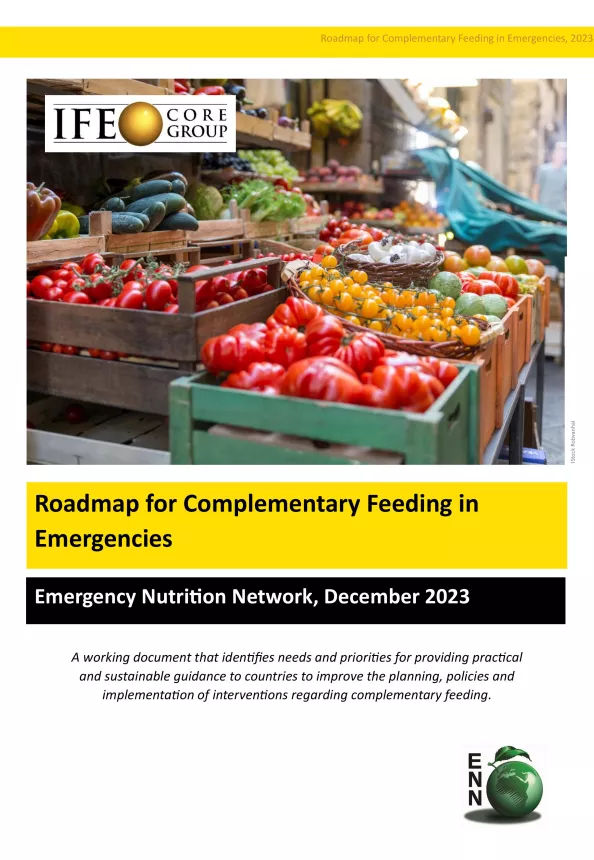Roadmap for Complementary Feeding in Emergencies
Publication details
A working document that identifies needs and priorities for providing practical and sustainable guidance to countries to improve the planning, policies and implementation of interventions regarding complementary feeding.
There is a growing recognition of the importance of Infant and Young Child Feeding (IYCF) particularly in emergencies, with effective IYCF acknowledging the interconnectedness of breastfeeding and complementary feeding (CF). To further enhance the global response to CF, action has been taken to document the implementation of CF programmes and interventions in various emergency contexts. The primary goal of this Roadmap for Complementary Feeding in Emergencies (CFE) is to collect evidence, share best practices and identify gaps, needs and enablers that must be addressed. This roadmap identifies needs and priorities for providing practical and sustainable guidance to countries to improve the planning, policies, and implementation of interventions regarding complementary feeding.

Download
Cite this publication
Reference this page
ENN (2024). Roadmap for Complementary Feeding in Emergencies. Emergency Nutrition Network (ENN), Oxford, UK. https://doi.org/10.6084/m9.figshare.25460590